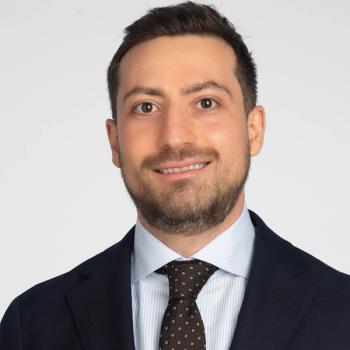
Clinical pathways guide treatment but don't dictate regimens
Oncology pathways can lead to quality programs and more cost-effective care for cancer patients.
Key Points
"Pathways are a truncation of guidelines and have the potential to provide evidence-based medicine across a continuum of care, reduce treatment variation and ultimately decrease costs-if done right," says Dawn Holcombe, president of DGH Consulting based in South Windsor, Conn.
Guidelines focus on a specific disease state and choice of drugs, usually offering a preferred treatment. She says pathways are of interest to payers because cancer is a complex disease whose treatment can vary substantially from one individual to another-unlike other more predictable conditions such as diabetes which has clear standards of care.
Lee Newcomer, MD, senior vice president, oncology services for United-Healthcare, calls pathways a building block for controlling treatment costs.
"But they do reduce errors and bring consistency to care, enabling oncologists to measure performance," Dr. Newcomer says.
PHYSICIANS LEAD THE WAY
Pathway models can be developed from the ground up, focusing more on clinicians' concerns, while top-down strategies from a payer might be perceived as cost pressure on physicians. For example, The US Oncology Network uses a physician-initiated approach, in which a team of community oncologists develops pathways through a consensus process.
"When evidence points to a superior treatment in terms of efficacy and safety, that regimen is used; however, when there is no proof of a better regimen, cost is taken into consideration," says Roy Beveridge, chief medical officer for Houston-based McKesson Specialty Health and The US Oncology Network.
Level 1 Pathways were developed by physicians in the US Oncology Network to support its 1,000 community-based, oncologists in making treatment decisions for 19 common cancers on the basis of efficacy, safety and cost. Beveridge says they are successful in reducing variation in care, improving the predictability of costs and promoting evidence-based medicine.
He says pathways have resulted in a 35% reduction in overall outpatient costs for non-small cell lung cancer in the community setting, for example.
Tom Ruane, MD, medical director of PPO programs for Blue Cross Blue Shield of Michigan, says that the health plan uses pathways to encourage the regular and uniform application of evidence-based guidelines developed by professional organizations for the treatment of cancer.
"We don't develop the pathways but enable physicians to start with NCCN guidelines, analyze them in detail and develop more specific pathways," he says. "An advisory group distills the guidelines into treatment protocol recommended for newly diagnosed cancer patients."
Pathways can drill down to the individual patient and find a specific treatment protocol for each person, according to Kimberley Harrison, healthcare manager for BCBS of Michigan. Some guidelines recommend three or four alternative drug interventions prescribed at certain dosages with expected success rates and side effects.
Winston Wong, PharmD, associate vice president of pharmacy management, CareFirst BlueCross BlueShield says pathways help plans predict per-member costs for treatment. Dr. Wong says ultimately, the final decision of what regimen to use is left to the oncologist.
"If a patient has an aggressive form of breast cancer, we do not expect physicians to follow step therapy but rather opt for the treatment best suited for a patient," he says.
With that said, Dr. Wong believes that the oncology pathways provide an opportunity for the plan and physicians, who are not bound by the payer, to collaborate with each other to determine the best choice of treatment.
Newsletter
Get the latest industry news, event updates, and more from Managed healthcare Executive.




















































